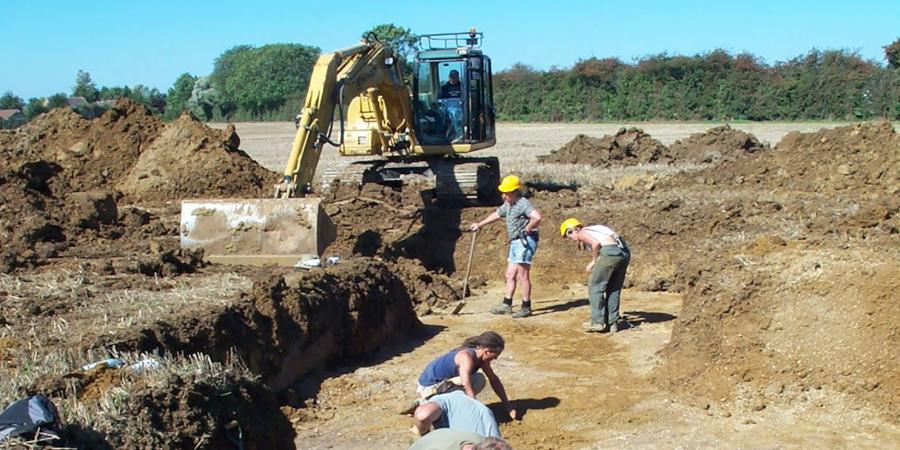Broadcast 30 January 2005
Wessex Archaeology was commissioned by Videotext Communications Ltd to carry out archaeological recording and post-excavation analysis on an archaeological
evaluation by Channel 4’s ‘Time Team’ at the Northborough Neolithic causewayed enclosure, Cambridgeshire (centred on NGR 515570 308450). The site, identified from cropmarks in 1996, has had no previous work undertaken, but lies just 1.8km east of the excavated causewayed enclosure at Etton. The main aim of the evaluation was to ascertain the character, date and condition of the site, as well as the extent of preservation and waterlogging in the ditches. The work was carried out from 7th-9th September 2004.
The air photographic transcription showed that the enclosure comprises two pairs of concentric circuits of short ditch segments and causeways, forming an inner and an outer enclosure. It is one of five causewayed enclosures within a 10km wide area, with other probable prehistoric features, including cursus monuments, ring ditches, and field systems also identified in air photographs. All of the sites are located on the wide, low-lying plain that fringes the fenland north of Peterborough.
The evaluation included a geophysical survey of the site comprising of c. 6ha of magnetometer survey, and seven evaluation trenches. The geophysical survey successfully defined the inner enclosure but most of the outer enclosure was less clearly defined, perhaps due to the variable nature and distribution of activities across the site.
The results of the geophysical survey were used to identify suitable locations for the evaluation trenches. Four of the trenches (Trenches 1, 2, 4 and 6) were positioned so as to investigate the ditches of the inner enclosure, but in each case revealed only one of the pair of ditches. In Trenches 1, 4 and 6 the ditches appear to have silted up naturally, and the limited evidence of post-construction activity includes a few sherds of pottery and charcoal on the base of the ditch, and possible dumps of soil – one organic-rich, another containing animal bone – into the infilling ditch. In Trench 2 at the west, however, there was evidence of more concentrated activity following a recutting of the largely silted up ditch. This may have been focussed on a wide causeway between ditch segments, possibly an entrance. The re-cut ditch contained a series of layers containing burnt clay and charcoal, and was sealed by a layer of material possibly from a levelled bank, these activities perhaps representing the formalised ‘closing’ of the site.
